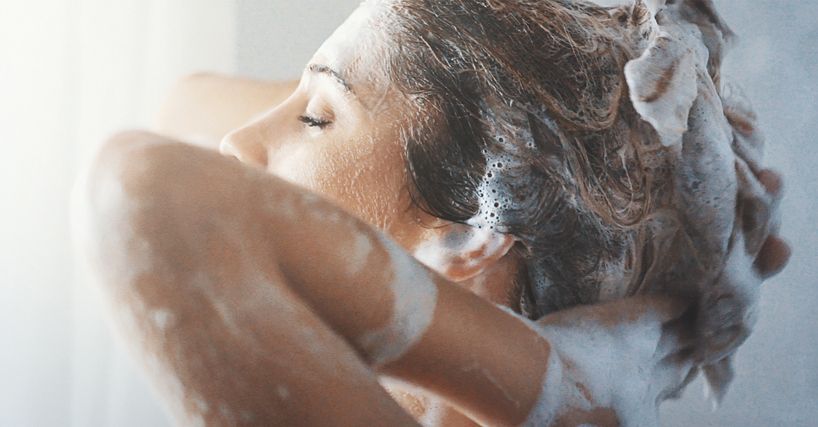Author: Natalie Ng|Updated: 30 April 2025
Smooth skin isn’t just about looks—it reflects how healthy your skin really is. If your face feels rough, bumpy, or dry to the touch, there's usually something deeper going on. Uneven skin texture often builds up over time, thanks to things like dead skin cells, excess oil, dry patches, or sun damage. Your skincare routine, skin type, and even daily habits can all affect how your skin’s surface feels and how well it holds onto moisture. Skin issues like clogged pores, dull skin, or premature ageing can start from something as simple as dehydration or the wrong exfoliant. When your skin barrier is damaged, it can’t protect itself properly. That’s when problems like rough skin, uneven tone, and loss of elasticity show up. Inflammation, harsh soaps, and even diet can also play a part. Professional treatments—like laser skin resurfacing or using key ingredients such as salicylic acid, hyaluronic acid, and vitamin C—can help improve texture. But real progress starts with understanding the cause. Whether it’s blocked pores, sun exposure, or skin conditions like keratosis pilaris, each issue needs a different fix. Keep reading to learn the most common reasons your skin doesn’t feel smooth—and how to get it back on track for a softer, healthier, and more even look.

Dead Skin Cell Buildup
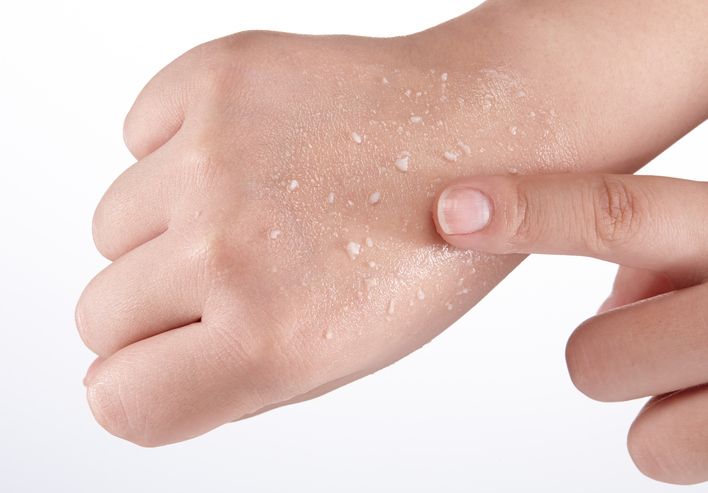
Your skin constantly renews itself by producing new cells. The older ones move to the surface and eventually shed—but this doesn’t always happen as it should. When dead skin cells build up, they sit on the skin’s surface and make it feel rough or look dull.
Why It Happens
Sometimes your skin doesn't shed old cells fast enough. This can happen if your skin is dry, your skincare routine is too harsh, or your environment pulls moisture from your skin. Dry patches, blocked pores, and textured skin often show up when dead cells stick around too long.
What It Affects
Dead skin buildup can clog pores, trap acne-causing bacteria, and stop your products from working properly. It also reduces skin hydration by making it harder for your skin to retain moisture. Areas like the nose, chin, and forehead are usually the first to feel bumpy or look uneven.
How to Fix It
Gentle exfoliation helps clear away buildup and gives your skin a smoother appearance. Start with a gentle scrub, or use chemical exfoliants like glycolic acid, salicylic acid, or alpha hydroxy acid. These help improve skin texture without damaging your skin barrier. For more stubborn buildup, treatments like chemical peels or microdermabrasion offer deeper exfoliation and support collagen production.
Clearing away dead skin cells helps reveal brighter skin, improves your overall skin tone, and supports a healthy skin barrier. It's also a key step in reducing rough skin and restoring your skin’s natural glow.

Dehydration and Compromised Skin Barrier
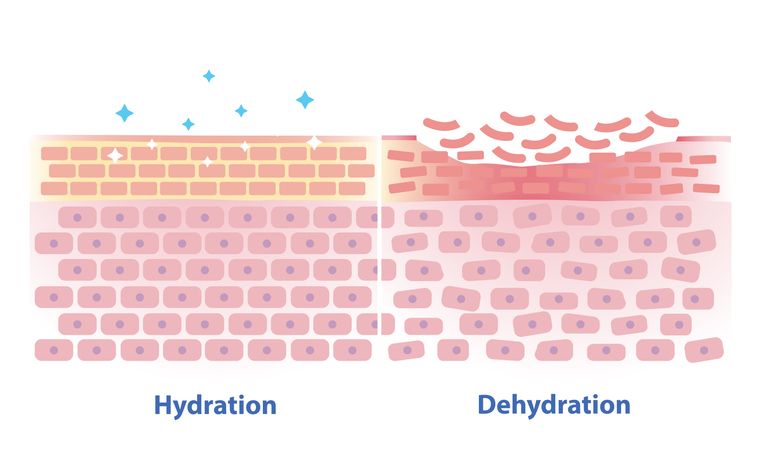
Your skin needs water to stay smooth and elastic. When it’s dehydrated, you’ll notice tightness, rough patches, and a lack of glow. But it’s not just about drinking more water—your skin also needs a healthy barrier to lock in moisture.
How Dehydration Affects Skin Texture
When your skin can't hold onto water, the surface starts to feel dry and uneven. You might see flaking or dull skin, especially around the cheeks, mouth, or forehead. This often makes your overall skin texture look worse, even if you're using good skincare products.
The Role of the Skin Barrier
The skin barrier is your body’s natural shield. It protects against bacteria, pollution, and UV rays. It also helps your skin retain moisture. When this barrier breaks down, water escapes more easily and irritants get in. That’s when you might start to see dry patches, sensitivity, or rough skin.
What Causes Barrier Damage
• Over-cleansing or using harsh soaps
• Using too many actives (like acids or retinoids)
• Sun exposure without at least SPF
• Cold, dry weather or indoor heating
• Not applying moisturizer after cleansing
How to Repair and Rehydrate
To help your skin retain moisture and support your skin’s barrier:
• Use a gentle cleanser that doesn’t strip natural oils
• Apply hydrating products to damp skin (like hyaluronic acid serum)
• Seal in hydration with a barrier-repairing moisturizer that contains ceramides or fatty acids
• Avoid over-exfoliating
• Stay hydrated by drinking water and eating water-rich foods like leafy greens
When your skin barrier is healthy, your skin looks smoother, feels softer, and is better protected from environmental damage. Small changes in your skincare routine can make a big difference in improving skin texture and restoring that natural glow.
Book Now to Experience
Acne Treatment
1 Minute Self-Registration
Date should not be before minimal date

Hormonal Imbalances
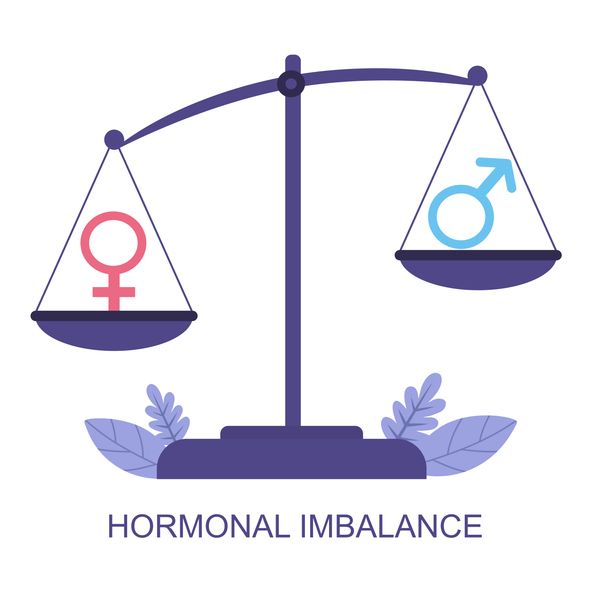
Your hormones have a direct effect on your skin. When they shift—whether due to your menstrual cycle, stress, or health conditions—your skin can respond with breakouts, excess oil, or a rough texture. These changes are especially noticeable if you have oily skin or are prone to acne.
Estrogen and Oil Production
Estrogen helps keep your skin balanced and hydrated. When levels drop, your skin may produce more oil, which can clog pores and lead to breakouts. You might notice this before your period, during perimenopause, or after stopping birth control.
Recognising the Signs
• Breakouts that follow a regular cycle
• Oilier skin than usual, especially around the jawline
• Rough skin or uneven skin texture that doesn’t improve with regular skincare
How to Manage Hormonal Skin
If you suspect hormones are affecting your skin, talk to a healthcare provider. Testing hormone levels can help guide treatment. Options may include:
• Birth control pills: Some types regulate hormones and reduce acne
• Lifestyle changes: Managing stress, staying hydrated, and eating nutrient-rich foods can support hormonal balance
• Topical treatments: Use non-comedogenic products and gentle exfoliants like salicylic acid to prevent clogged pores
Thyroid and Skin Texture
Your thyroid helps control how your body functions—including how your skin behaves. When thyroid hormones are out of balance, your skin might:
• Become dry, rough, or scaly
• Look dull and pale
• Develop excess oil (in cases of hyperthyroidism)
In some cases, thinning hair and brittle nails also appear alongside these skin changes.
If your skin texture suddenly changes and doesn’t respond to your usual skincare routine, it may be worth getting your thyroid checked. Treating an underlying hormonal issue can lead to lasting improvements in your skin’s texture and overall health.

Environmental Damage and Sun Exposure
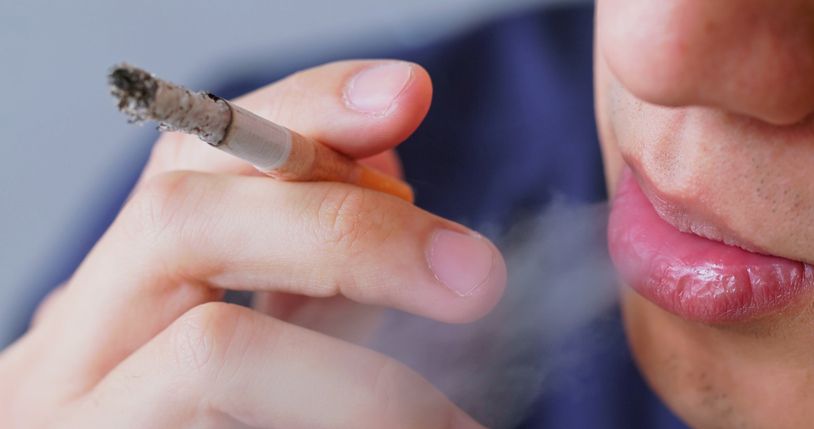
Your skin deals with environmental stress every day. Pollution, UV rays, and extreme weather can all wear down your skin’s surface, causing rough texture, dark spots, and early signs of skin ageing.
How the Environment Affects Skin Texture
Pollution and tobacco smoke introduce free radicals to your skin. These unstable molecules damage collagen and elastin—proteins that keep your skin smooth and firm. Over time, this leads to rough patches, uneven skin tone, and dull skin.
UV rays are another major cause of skin damage. Too much sun exposure breaks down your skin’s moisture barrier and speeds up collagen loss. This can cause dry skin, rough texture, and premature skin aging.
Even indoor environments play a role. Air conditioning and heaters dry out the air, which reduces your skin's ability to retain moisture. Without enough hydration, your skin loses elasticity and looks less smooth.
Common Signs of Environmental Skin Stress
• Dry patches that won’t go away
• Uneven skin tone or dark spots
• Increased sensitivity or redness
• Rough or bumpy skin on exposed areas like the face and upper arms
How to Protect and Repair
To reduce skin damage from your environment:
• Wear at least SPF 30 daily, even when it’s cloudy
• Use antioxidants like a vitamin C serum to fight free radicals
• Cleanse gently at night to remove pollutants without stripping natural oils
• Moisturize to support your skin's moisture barrier
• Consider treatments like laser skin resurfacing or chemical exfoliants to repair damaged texture
Book Now to Experience
Acne Treatment
1 Minute Self-Registration
Date should not be before minimal date

Incorrect Product Application
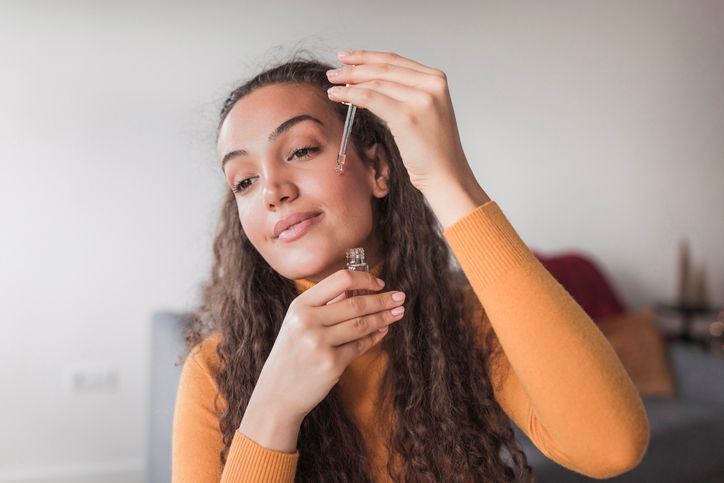
Even the right skincare products won’t help if you use them the wrong way. Applying products out of order, using too much, or combining the wrong ingredients can weaken your skin barrier, cause irritation, and make your skin texture worse.
What Goes Wrong
Using products incorrectly can:
• Block absorption: For example, applying a serum after moisturizer stops it from reaching deeper layers
• Irritate your skin: Combining strong actives (like retinol and exfoliating acids) can lead to redness, dryness, or breakouts
• Reduce results: Applying too many products too quickly can stop them from working effectively
• Weaken your barrier: Overusing exfoliants or skipping moisturizer can damage your skin’s surface
Common Mistakes
• Applying serums after moisturizers, which prevents proper absorption
• Layering ingredients that don’t mix well (like vitamin C and certain acids)
• Rushing through your routine without allowing each product to absorb
• Using harsh exfoliants too often, damaging the skin’s moisture barrier
How to Fix It
To support skin health and improve texture:
• Follow a simple skincare routine: cleanser → toner (optional) → serum → moisturizer → SPF (in the morning)
• Use products that suit your skin type—what works for oily skin might not work for dry skin
• Give each product 30–60 seconds to absorb before moving to the next
• Stick to exfoliating 2–3 times a week, not daily
• Focus on hydrating layers and avoid overloading your skin
Using your products correctly helps maintain a strong skin barrier and boosts the effectiveness of your routine—leading to smoother, healthier-looking skin.

Diet and Nutritional Deficiencies
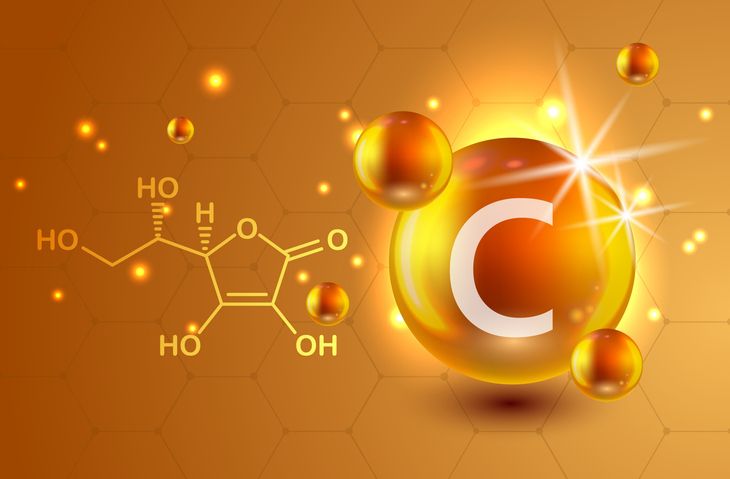
What you eat shows up on your skin. A poor diet can lead to dull skin, uneven texture, and slow healing. Without the right nutrients, your skin struggles to stay smooth, hydrated, and strong.
How Nutrition Affects Skin Texture
Your skin needs certain vitamins, minerals, and healthy fats to function properly. These nutrients support collagen production, help your skin retain moisture, and protect your skin’s moisture barrier. When your diet lacks key ingredients, your skin can become dry, rough, and more prone to breakouts or irritation.
Common Signs of Nutritional Gaps
• Dry patches or rough skin that doesn’t improve with products
• A dull complexion that lacks glow
• Premature skin aging, like fine lines or loss of firmness
• Uneven skin tone or slow healing after breakouts
Key Nutrients for Smooth Skin
| Nutrient | Role in Skin Health | Good Sources |
|---|---|---|
| Vitamin C | Boosts collagen production, brightens skin tone | Citrus fruits, berries, bell peppers |
| Omega-3s | Strengthens skin barrier, locks in moisture | Salmon, walnuts, flaxseeds |
| Zinc | Supports cell repair, reduces inflammation | Pumpkin seeds, oysters, beef |
| Vitamin E | Protects against UV rays damage | Almonds, sunflower seeds |
| Water | Maintains skin hydration | Drink throughout the day |
What to Do
• Eat a balanced diet with plenty of fruits, vegetables, healthy fats, and lean protein
• Focus on foods rich in antioxidants to support healthy skin
• Avoid processed foods high in sugar and trans fats—they can worsen skin issues
• Stay hydrated to help your skin retain moisture from the inside out
• Consider seeing a nutritionist if you suspect vitamin deficiencies
Improving your diet can help reduce rough patches, brighten your complexion, and support a smoother appearance over time. Skin health starts with what you feed your body.
Book Now to Experience
Acne Treatment
1 Minute Self-Registration
Date should not be before minimal date

Genetics and Skin Conditions

Some skin texture issues aren’t caused by your routine—they’re inherited. Your genes influence how your skin behaves, including how much oil it produces, how it reacts to triggers, and how well it maintains a healthy barrier. While you can’t change your DNA, you can manage genetic conditions with the right care.
How Genetics Affect Skin Texture
Genetics can affect:
• Collagen production, which impacts skin elasticity
• How your skin handles natural oils
• How prone your skin is to clog pores or develop rough patches
• Your skin’s ability to resist inflammation or repair damage
Even with a good skincare routine, some skin conditions caused by genetics will still need targeted treatment.
Common Genetic Skin Conditions
• Keratosis pilaris: Small bumps, often on the upper arms or thighs. These are caused by trapped keratin in hair follicles and can feel like sandpaper.
• Eczema: Causes dry, itchy, inflamed skin. Often worsens with environmental triggers or stress.
• Psoriasis: Leads to red, scaly patches that may feel raised and rough.
• Acne: Tends to run in families, especially cystic or hormonal acne.
What You Can Do
• Use fragrance-free, non-irritating skincare products to avoid flare-ups
• Keep your skin barrier strong with moisturizers that include ceramides or fatty acids
• Look for chemical exfoliants like azelaic acid or salicylic acid for clogged pores or keratosis pilaris
• For conditions like psoriasis or eczema, consult a dermatologist for prescription treatments
• Be realistic—managing symptoms is more effective than trying to “cure” a genetic condition
Understanding your skin type and family history helps you create a plan that works with your skin—not against it. With consistency and professional support, you can reduce roughness and improve your overall skin texture.

Poor Exfoliation Techniques
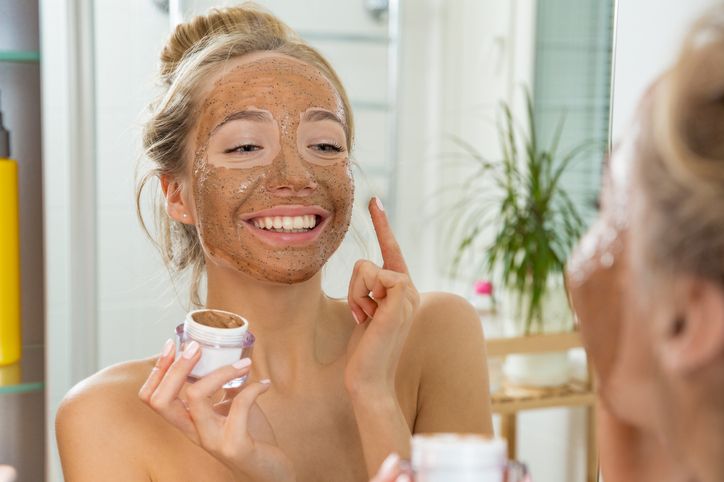
Exfoliation is important for smoother skin—but how you exfoliate matters. Using the wrong method, applying too much pressure, or picking products that don’t suit your skin type can cause more harm than good.
Why Exfoliation Can Backfire
Exfoliating too harshly can damage your skin's surface, strip away natural oils, and weaken your skin barrier. This leads to inflammation, redness, and rough skin texture. Over time, your skin may become more sensitive, dry, and prone to breakouts.
Common Mistakes
• Scrubbing with too much force
• Using exfoliants with rough or jagged particles (like walnut shells)
• Choosing chemical exfoliants that are too strong for your skin type
• Exfoliating too often—daily use can cause more irritation than improvement
Signs You’re Overdoing It
• Your skin feels tight, raw, or stings after exfoliating
• You notice flaking, dry patches, or increased redness
• Breakouts increase instead of clearing
• Your skin develops a rough, uneven texture
How to Exfoliate the Right Way
• Choose exfoliants that match your skin type:
Sensitive skin: Try polyhydroxy acids (PHAs) or enzyme-based exfoliants
Oily or acne-prone skin: Beta hydroxy acids (BHAs) like salicylic acid help unclog pores
Normal to dry skin: Alpha hydroxy acids (AHAs) like glycolic acid support cell turnover
• Use gentle circular motions when applying physical scrubs
• Limit exfoliation to 2–3 times a week
• Always moisturize afterward to protect your skin’s moisture barrier
Proper exfoliation helps remove dead skin cells, reduce blocked pores, and reveal smoother, brighter skin—without causing damage. The goal is to support your skin, not stress it.
Book Now to Experience
Acne Treatment
1 Minute Self-Registration
Date should not be before minimal date

Underlying Medical Issues
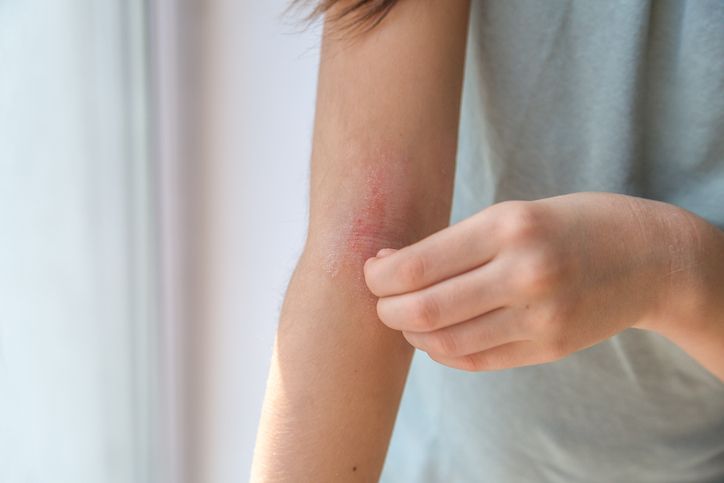
If your skin texture doesn’t improve with skincare, lifestyle changes, or diet, there may be an underlying medical issue involved. Certain health conditions can affect how your skin looks and feels, especially when they impact hormone levels, inflammation, or immune response.
Medical Conditions That Affect Skin Texture
• Eczema: Causes dry, itchy, inflamed skin. It often appears in patches and feels rough or scaly.
• Psoriasis: Leads to thick, red areas with silvery scales. The texture is often raised and persistent.
• PCOS (Polycystic Ovary Syndrome): Triggers hormonal imbalances that lead to excess oil, clogged pores, and acne.
• Thyroid disorders: Can make your skin dry, rough, or oily, depending on whether thyroid activity is low or high.
• Autoimmune diseases: May cause inflammation or changes in skin texture, depending on the condition.
These conditions often don’t respond to standard skincare routines alone.
When to See a Professional
• You’ve tried adjusting your routine, diet, and hydration with little or no improvement
• You’re dealing with persistent breakouts, dryness, or irritation that doesn’t make sense
• You’re noticing other symptoms—like fatigue, hair thinning, or hormone changes
A dermatologist or healthcare provider can test for these conditions and help create a treatment plan. Prescription medications or lifestyle changes might be needed to improve your skin from the inside out.

Professional Acne Treatment for Smoother, Clearer Skin
If you’ve been dealing with breakouts, oily skin, or acne scars, these issues may be blocking your path to smooth skin. Acne not only causes inflammation and clogged pores—it also leaves behind uneven skin texture and dark spots that don’t fade easily. That’s where New Beauty’s Acne Treatment can make a visible difference.
How Acne Treatment Supports Smooth Skin
This treatment goes beyond surface-level fixes. It uses a dual spiral suction and drainage system to deeply cleanse pores, remove excess oil, dead skin cells, and acne-causing bacteria. By clearing out what’s blocking the pores and causing inflammation, your skin's surface becomes smoother and more even.
Once the skin is clean, a medical-grade hydrating serum is infused into the skin. This helps restore the skin's moisture barrier, balance sebum production, and stimulate collagen production—all of which are essential for improving skin texture and reducing rough patches.
Key Benefits of Acne Treatment
• Unclogs pores and removes trapped oil and debris
• Reduces active breakouts and prevents future ones
• Promotes skin hydration and supports a healthy water-sebum balance
• Softens the look of acne scars and textured skin
• Helps repair and strengthen the skin barrier
• Non-invasive and painless with no downtime
This treatment is especially useful for people struggling with blocked pores, acne lesions, and uneven skin tone caused by acne-related inflammation. It creates a clean foundation for other skincare products to work more effectively and accelerates the process of getting smoother, healthier-looking skin.
If your goal is to improve skin texture and reduce acne-related skin issues, this treatment can help restore clarity, softness, and a more balanced complexion.
Book your Acne Treatment today and start your path to smoother, clearer, and more confident skin.
New Beauty's Acne TreatmentBook Now to Experience
Acne Treatment
1 Minute Self-Registration
Date should not be before minimal date
FAQ
How Long Does It Take to See Results From Professional Skin Treatments?
You'll see initial results from most professional skin treatments within 1-2 weeks, but your full transformation takes time. Chemical peels show improvement after 5-7 days, while laser treatments need 2-3 sessions over several months. Microdermabrasion delivers instant smoothness, but lasting changes come after 6-12 sessions.
Can Pregnancy Permanently Change Your Skin Texture?
During and after pregnancy, hormonal changes can permanently alter your skin's texture. You'll notice increased melanin production causing dark patches, stretching that leads to permanent texture changes, and even shifts in oil production. While some changes revert postpartum, others might stick around as lasting souvenirs of your motherhood journey.
Is It Possible to Shrink Enlarged Pores Naturally?
While you can't physically shrink your pores, you can minimize their appearance through natural methods. Try using ice cubes to tighten the skin, applying green tea as a toner, or using clay masks weekly. Regular exfoliation with natural ingredients like coffee grounds or oatmeal will help remove debris that makes pores look larger. Don't forget to keep your skin hydrated and protect it from sun damage.
At What Age Should Someone Start Professional Skin Treatments?
You can start professional skin treatments as early as your late teens or early 20s, but there's no strict rule. It's your choice to begin when you notice specific concerns or want to take preventive measures. Listen to your skin's needs rather than following arbitrary age guidelines. Start with gentle treatments like basic facials, and progress to more intensive procedures as your skin requires targeted care.
Does Drinking Alcohol Directly Affect Skin Smoothness and Texture?
Your skin suffers when you drink alcohol. It dehydrates your body from the inside out, making your skin lose its natural bounce and glow. You'll notice more visible pores, rougher texture, and increased dullness. Alcohol also triggers inflammation and dilates blood vessels, leaving you with uneven patches. Breaking free from excessive drinking can help restore your skin's natural smoothness.
Recommended Articles
COPYRIGHT© NEW BEAUTY MANAGEMENT LIMITED 2025. ALL RIGHT RESERVED.

